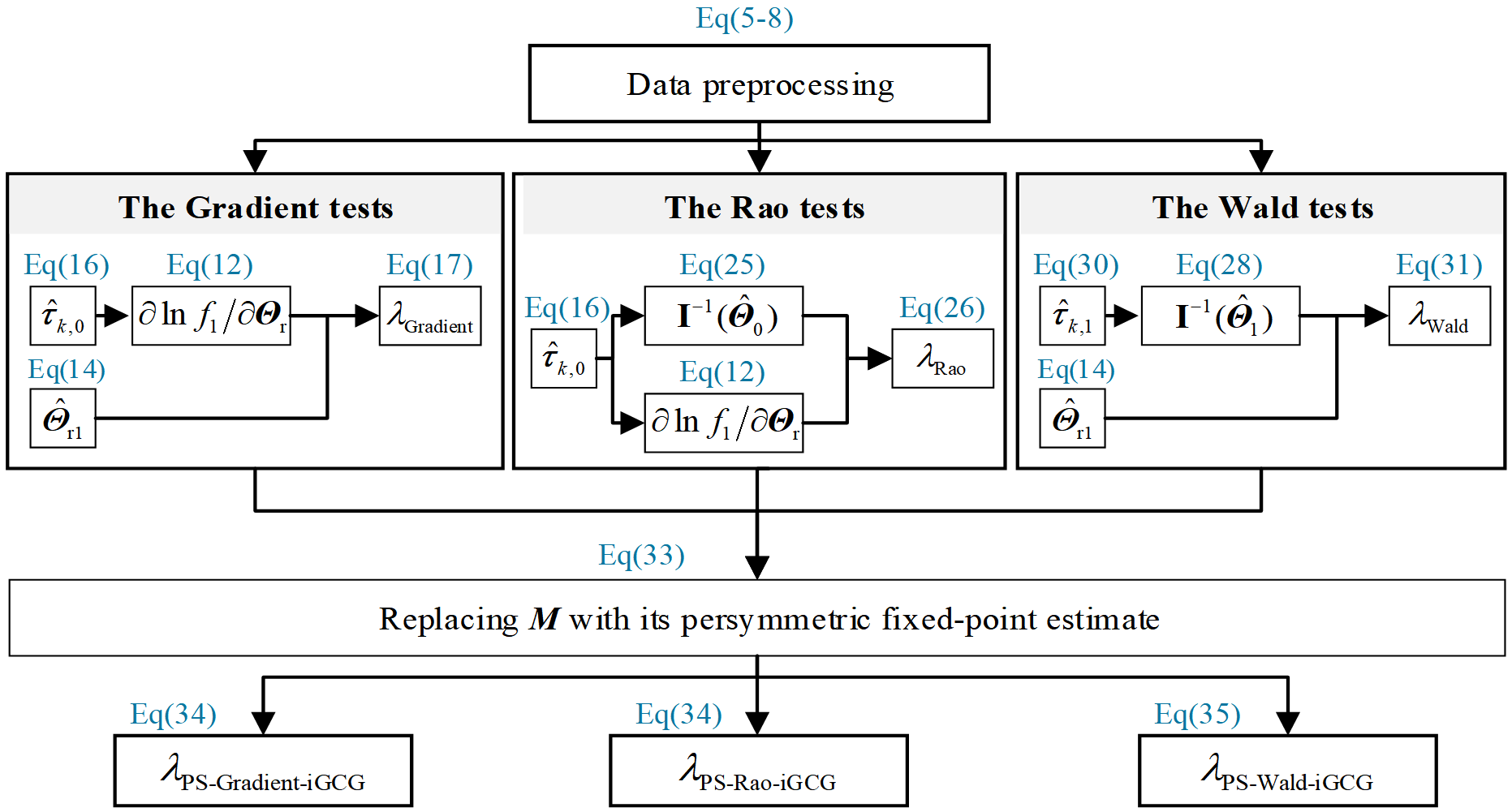Abstract
This research addresses the challenge of detecting radar range-spread targets in compound-Gaussian clutter environments. In such scenarios, the target signals occupy unknown coordinates within a subspace, while the clutter is modeled as compound-Gaussian distribution involving inverse Gamma textures and complex Gaussian speckles with an unknown persymmetric covariance matrix. Additionally, we assume the availability of training data for estimating clutter covariance matrix. Utilizing a two-step approach, three detectors are proposed according to the Gradient, Rao, and Wald tests, by taking advantage of the persymmetry of the clutter covariance matrix. Theoretical analyses demonstrate that the proposed detectors maintain an asymptotically constant false alarm rate relative to the structure of the clutter covariance matrix. Furthermore, Monte Carlo simulations have yielded numerical evidence indicating that the proposed detectors outperform the current contrastive approaches, especially in cases where the training data is scarce.
Keywords
compound-Gaussian clutter
range-spread targets
persymmetry
gradient test
rao test
wald test
Data Availability Statement
Data will be made available on request.
Funding
This work was supported in part by the National Natural Science Foundation of China under Grant 62471483 and Grant 61971432; in part by the Taishan Scholar Project of Shandong Province under Grant tsqn201909156.
Conflicts of Interest
Xiaoming Tang is an employee of The 3H Company, Yantai 264001, China.
Ethical Approval and Consent to Participate
Not applicable.
Cite This Article
APA Style
Jian, T., Xie, Z., He, J., Guo, L., & Tang, X. (2025). Persymmetric Two-Step-Based Detectors for Range-Spread Targets against Compound-Gaussian Clutter. Chinese Journal of Information Fusion, 2(4), 296–312. https://doi.org/10.62762/CJIF.2025.664545
Publisher's Note
ICCK stays neutral with regard to jurisdictional claims in published maps and institutional affiliations.
Rights and Permissions

Copyright © 2025 by the Author(s). Published by Institute of Central Computation and Knowledge. This article is an open access article distributed under the terms and conditions of the Creative Commons Attribution (CC BY) license (
https://creativecommons.org/licenses/by/4.0/), which permits use, sharing, adaptation, distribution and reproduction in any medium or format, as long as you give appropriate credit to the original author(s) and the source, provide a link to the Creative Commons licence, and indicate if changes were made.


 Submit Manuscript
Edit a Special Issue
Submit Manuscript
Edit a Special Issue

 Copyright © 2025 by the Author(s). Published by Institute of Central Computation and Knowledge. This article is an open access article distributed under the terms and conditions of the Creative Commons Attribution (CC BY) license (https://creativecommons.org/licenses/by/4.0/), which permits use, sharing, adaptation, distribution and reproduction in any medium or format, as long as you give appropriate credit to the original author(s) and the source, provide a link to the Creative Commons licence, and indicate if changes were made.
Copyright © 2025 by the Author(s). Published by Institute of Central Computation and Knowledge. This article is an open access article distributed under the terms and conditions of the Creative Commons Attribution (CC BY) license (https://creativecommons.org/licenses/by/4.0/), which permits use, sharing, adaptation, distribution and reproduction in any medium or format, as long as you give appropriate credit to the original author(s) and the source, provide a link to the Creative Commons licence, and indicate if changes were made. 